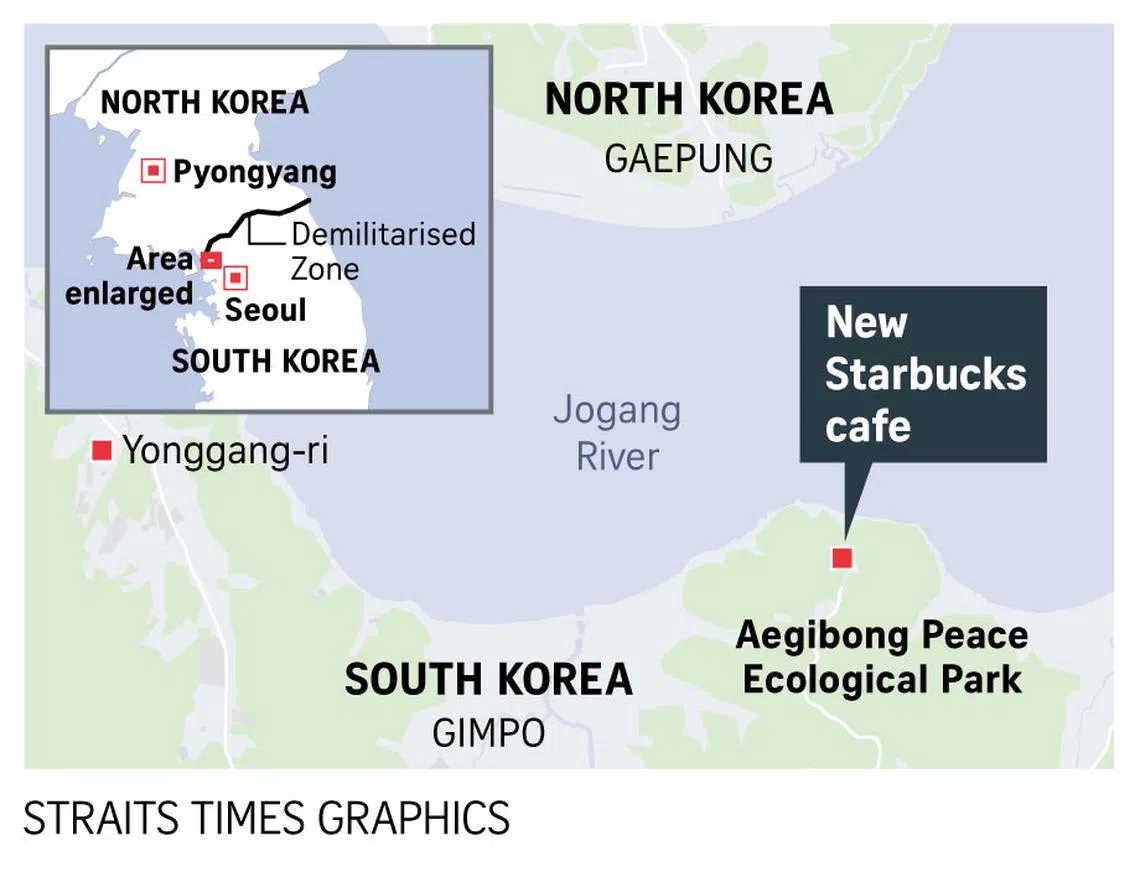Starbucks cafe offers view of village in North Korea, stirring up bittersweet feelings
Sign up now: Get ST's newsletters delivered to your inbox
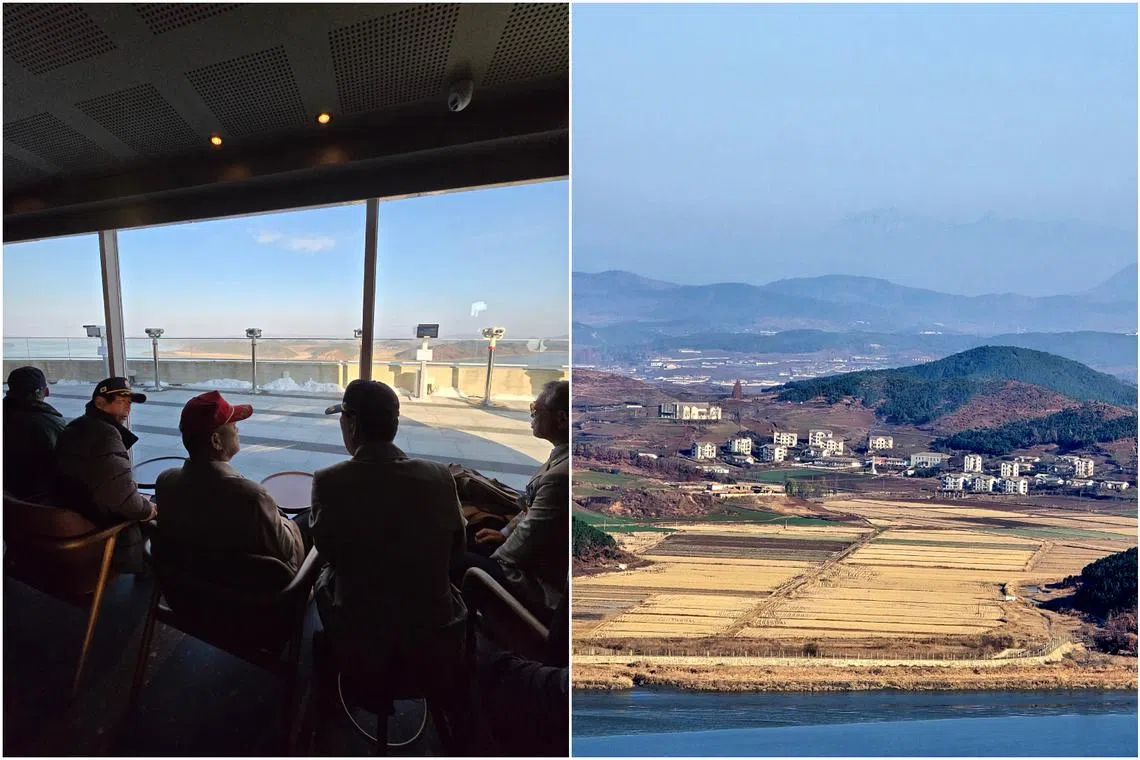
The Starbucks cafe’s location allows visitors an unfettered view of a small village in North Korea’s Gaepung county just 1.4km away.
ST PHOTOS: WENDY TEO
Follow topic:
GIMPO - People curious about North Korea can now get a peek at life inside the famously reclusive country while lingering over a cup of coffee.
A 40-seater Starbucks cafe opened last week
The cafe’s location allows visitors to have an unfettered view of a small village in North Korea’s Gaepung county just 1.4km away, so near that the number of buildings in the village can be counted.
The North Korean village houses some 20 three-storey high buildings that look like residences, with a single-storey building that looks like a school, a plaza and rice fields near the riverbank.
Telescopes on the observatory terrace outside the cafe, which offer 100x zoom capabilities, allow for an even closer peek.
A Gimpo official jokes that “you can almost make eye contact with the villagers”.
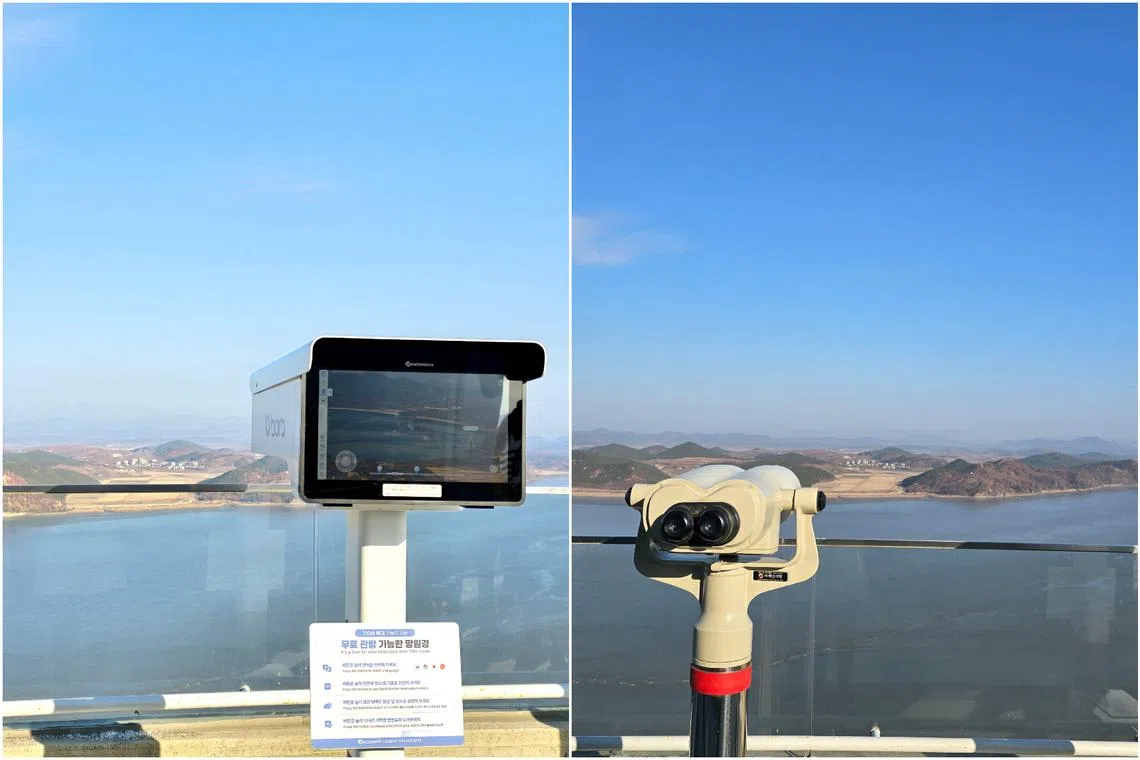
Free-to-view telescopes on the observatory terrace outside the cafe offer 100x zoom view of the North Korean village.
ST PHOTOS: WENDY TEO
Visitors who wish to enter the ecopark, where the Starbucks cafe is located, are required to show their identification and register at the guard post at the entrance of the park, a civilian control area.
Before it was turned into a park in 1978, the Aegibong mountain was the site of one of the fiercest battles fought by the two Korean armies during the 1950-53 Korean War.
For the 200 or so visitors who thronged the Starbucks cafe on the morning of its opening on Nov 29, excitement over being able to view North Korean territory at such proximity was mixed with feelings of regret and sadness.
Gimpo resident Baek Hye-soon, 49, a housewife, was the first to arrive at the cafe when it opened at 10am.
She told The Straits Times: “I wanted to experience this unique moment, so I came early with my friends and became the first visitor. It’s a very special feeling.”
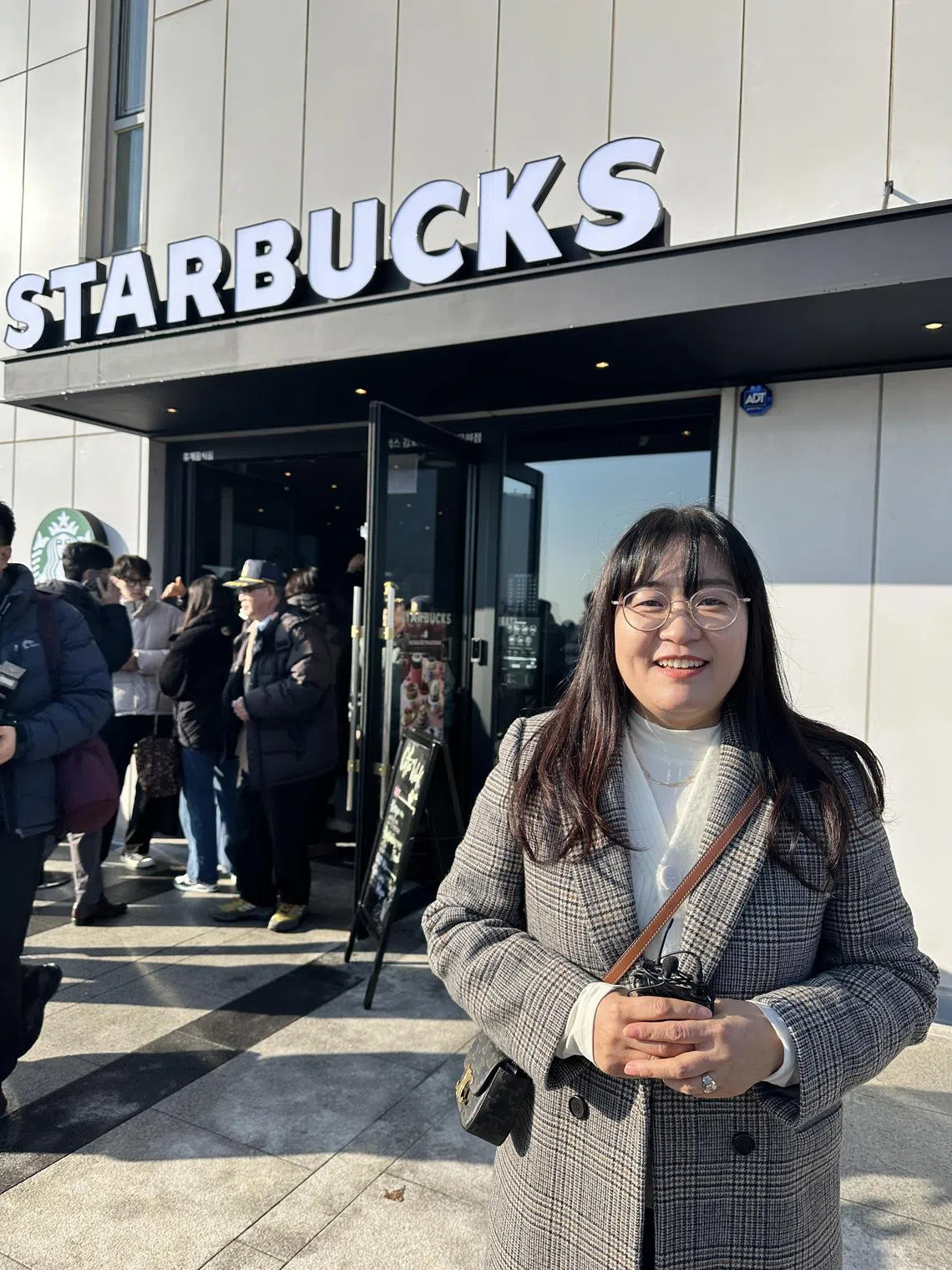
Ms Baek Hye-soon says the environments of the two Koreas have such stark contrasts despite being so close. It makes her feel sorrowful and she wishes she could bring them all over to the South.
ST PHOTO: WENDY TEO
During her previous trips to the park, she would use the binoculars to look at North Korea and then leave without thinking too much about it, she said.
“But now, with coffee available, it makes you linger longer, and looking over to the North makes you feel more emotional too. The two environments of North and South Korea have such stark contrasts despite being so close. It makes me feel sorrowful, and I wish I could bring them all over to the South.”
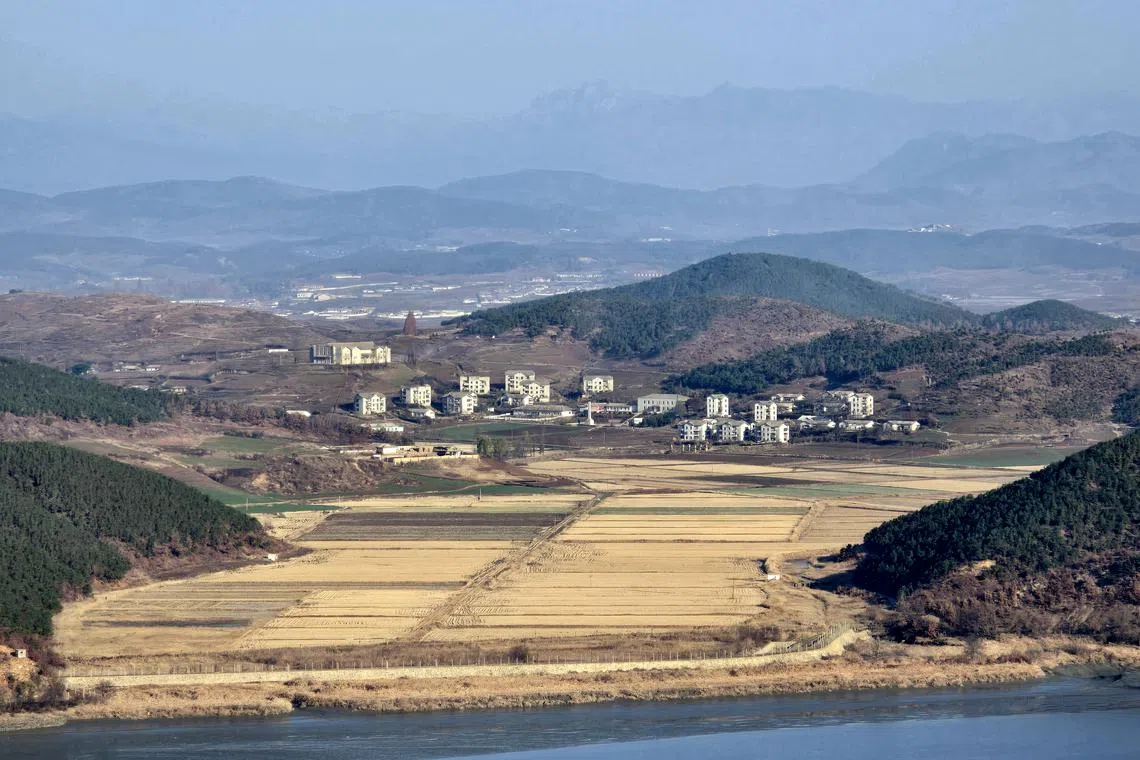
This Gaepung county village of North Korea can be seen clearly from the new Starbucks cafe.
ST PHOTO: WENDY TEO
Mr Nam Oh-Hoon’s family was originally from a county to the north-east of North Korea’s capital Pyongyang.
While all of his family members are now in South Korea, the 76-year-old retiree still feels a pang when he gazes over the horizon.
“It’s such a pity that even though we are so near, we cannot go over to the North any more. The people there are living such hard lives.”
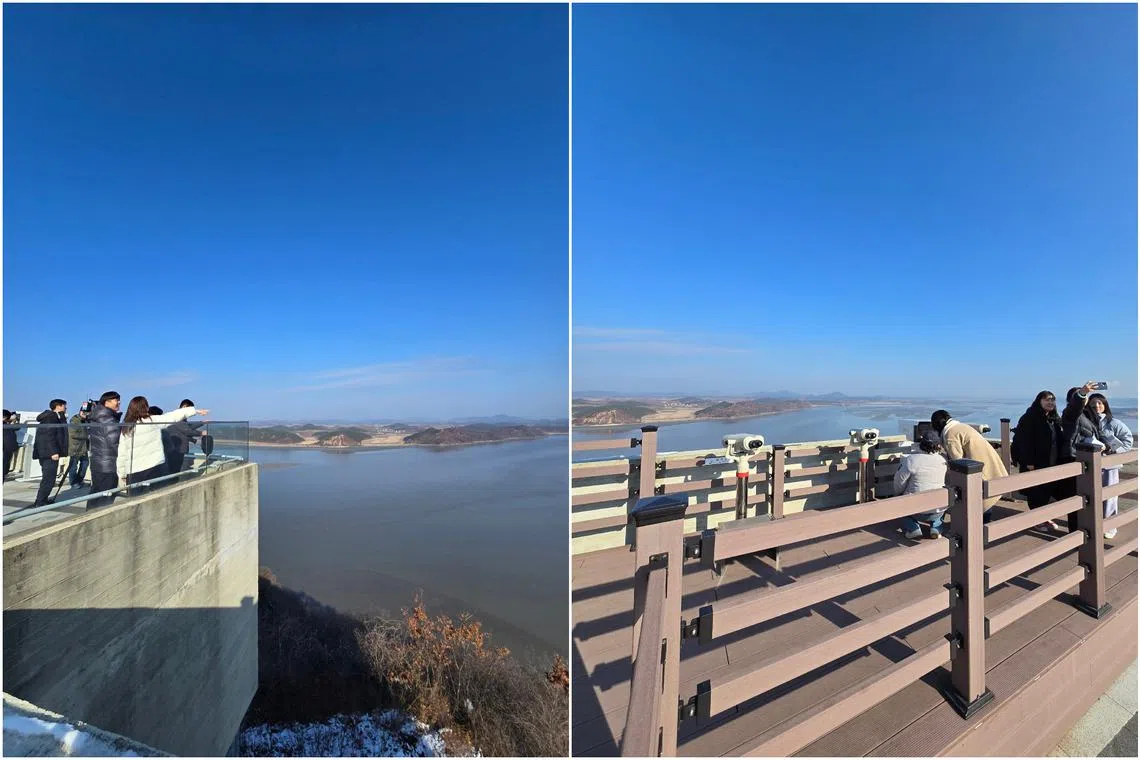
Visitors checking out the North Korean village via telescopes at the cafe (left) and at the Aegibong Peace Ecopark (right).
ST PHOTOS: WENDY TEO
The cafe’s opening comes at a time of heightened tensions between the two Koreas.
In January 2024, North Korean leader Kim Jong Un abandoned plans of unifying with South Korea that were outlined by his grandfather Kim Il Sung in 1972. North Korea has since amended its Constitution to brand the South
Apart from sending thousands of trash balloons blew up parts of road and rail links
Mr Kim has also angered Seoul and its allies by dispatching troops to Russia
Despite the tensions, Mayor Kim Byung-soo of Gimpo, a city of about half a million residents, remains upbeat.
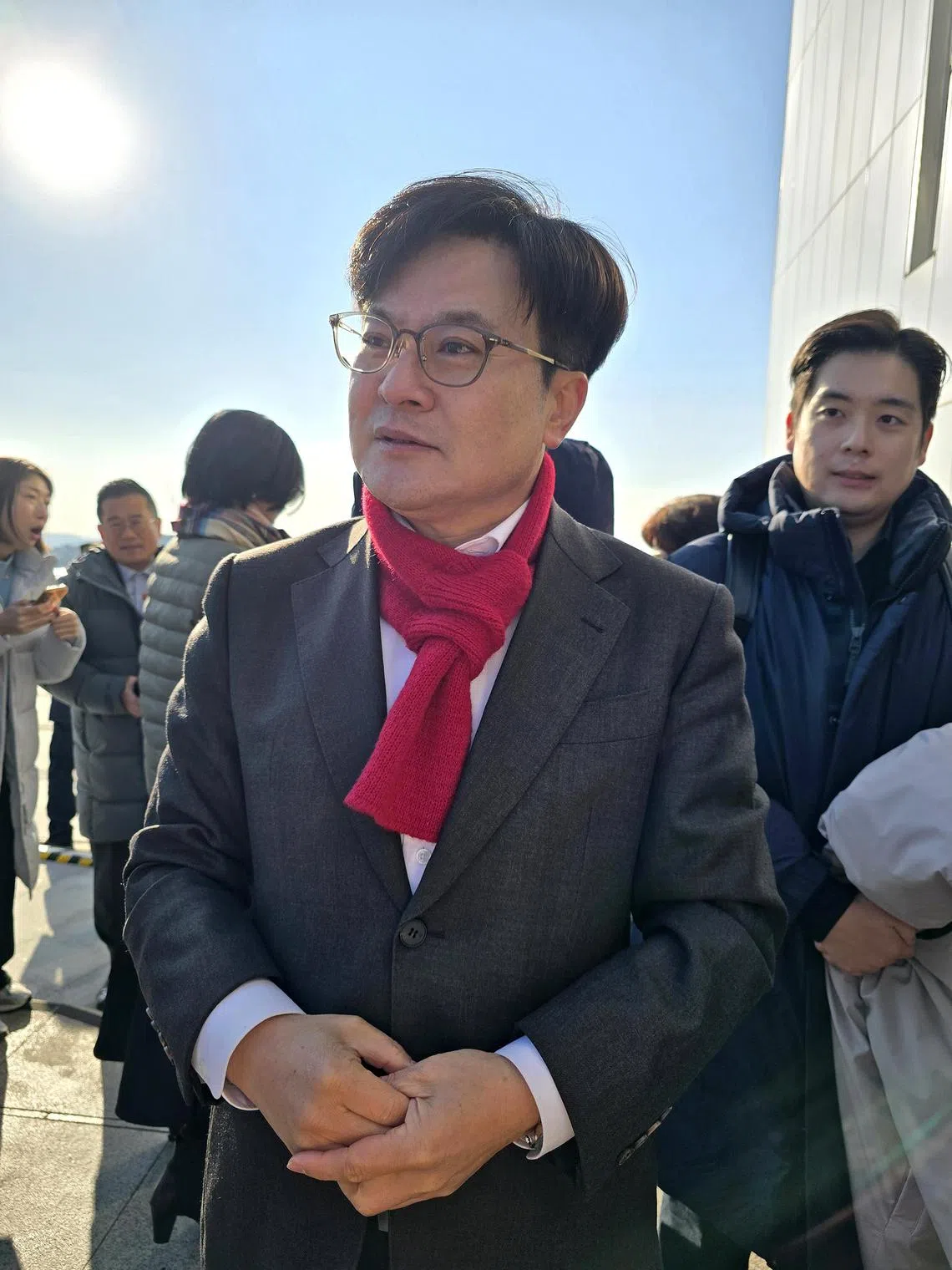
Gimpo City Mayor Kim Byung-soo at the opening of the Starbucks cafe.
ST PHOTO: WENDY TEO
He assured ST that measures are in place to protect visitors should the situation call for it.
“If tensions rise and things become difficult, the military would start restricting access. In other words, as long as the gates to the park remain open, it means it is safe to visit,” he said.
While the water level in the river here can drop to as low as 40cm, which makes it technically possible to cross it on foot, there have been no defections from the North, precisely because of the area’s high visibility, said Mayor Kim.
“Even though the river serves as a natural boundary, and we don’t have a DMZ (demilitarised zone) here, we still have a barbed fence heavily monitored by military equipment and personnel, and such incidents have not happened before,” he added.
There is no overland DMZ here at the western end of the divide between the two Koreas, where the Jogang river forms a natural maritime demarcation.
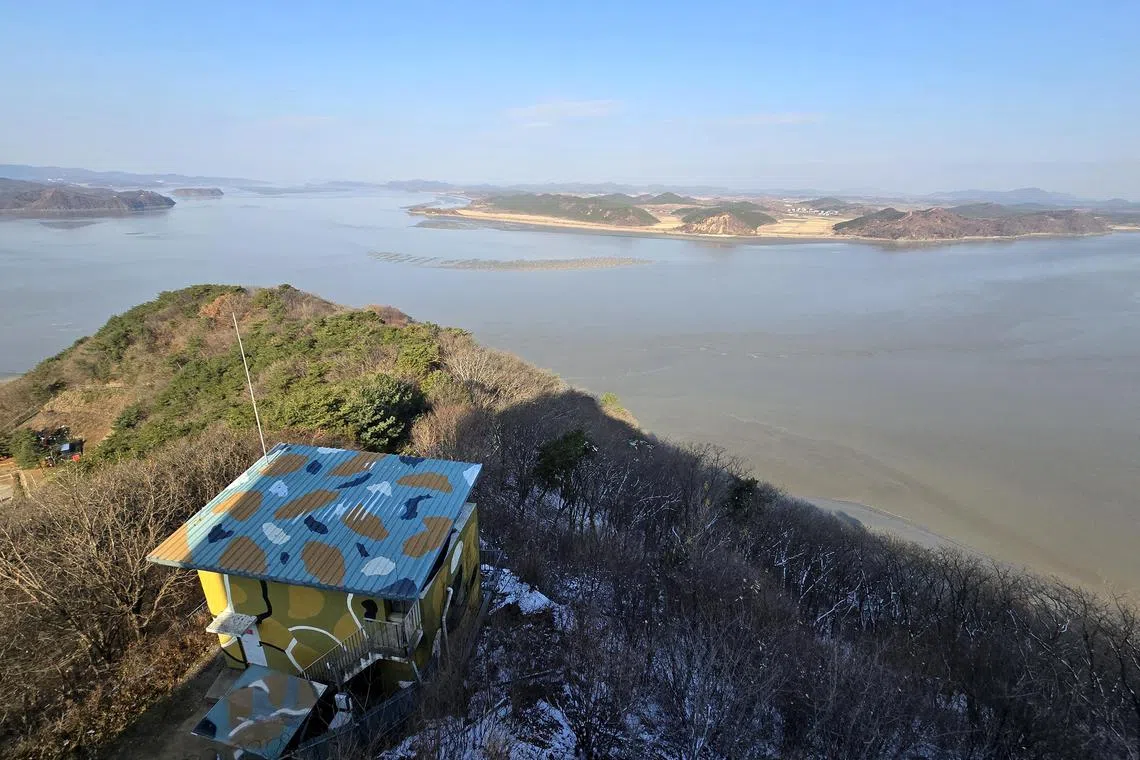
The Han river level here dips to 40cm during low tides.
ST PHOTO: WENDY TEO
On the day the cafe opened, North Korea sent yet another batch of 40 balloons to the South, which landed in capital city Seoul and the surrounding Gyeonggi province.
While the cafe’s Starbucks signage – a symbol of Western culture and capitalism – is highly visible from the North Korean side, Mayor Kim said the cafe is not likely to be a target for the balloons as “it is too near for the balloons to fall here”.
When asked by ST, he said the decision to bring in Starbucks “was not intended to show off to North Korea”.

The cafe’s Starbucks signage - a symbol of Western culture and capitalism - is highly visible from the North Korean side.
PHOTO: BLOOMBERG
Noting that Aegibong is a beautiful place to watch sunsets over the river, he said: “Despite its beauty, not many people come here because there is not enough awareness. So we are simply leveraging Starbucks’ brand power to promote this place to visitors.”
According to Gimpo city officials, Starbucks participated in a public tender for the new cafe space and won the rights to tenancy until 2028. Starbucks personnel present at the cafe opening declined all media interviews.
About an hour into the cafe’s opening, sounds could be heard from across the waters.
Eighty-year-old Choi Du-cheon, who lives in Yonggang-ri village along the river on the South Korean side about 10 minutes’ drive from the park, said North Korea had likely broadcast the noise in response to the din created by excited visitors and reporters at the cafe’s opening.
He told ST: “People living around here hear it all the time. It sounds like ‘wang wang wang’, like an ambulance siren, and sometimes carries on into the night. But perhaps we are already used to it – it does not disturb our sleep at all.”
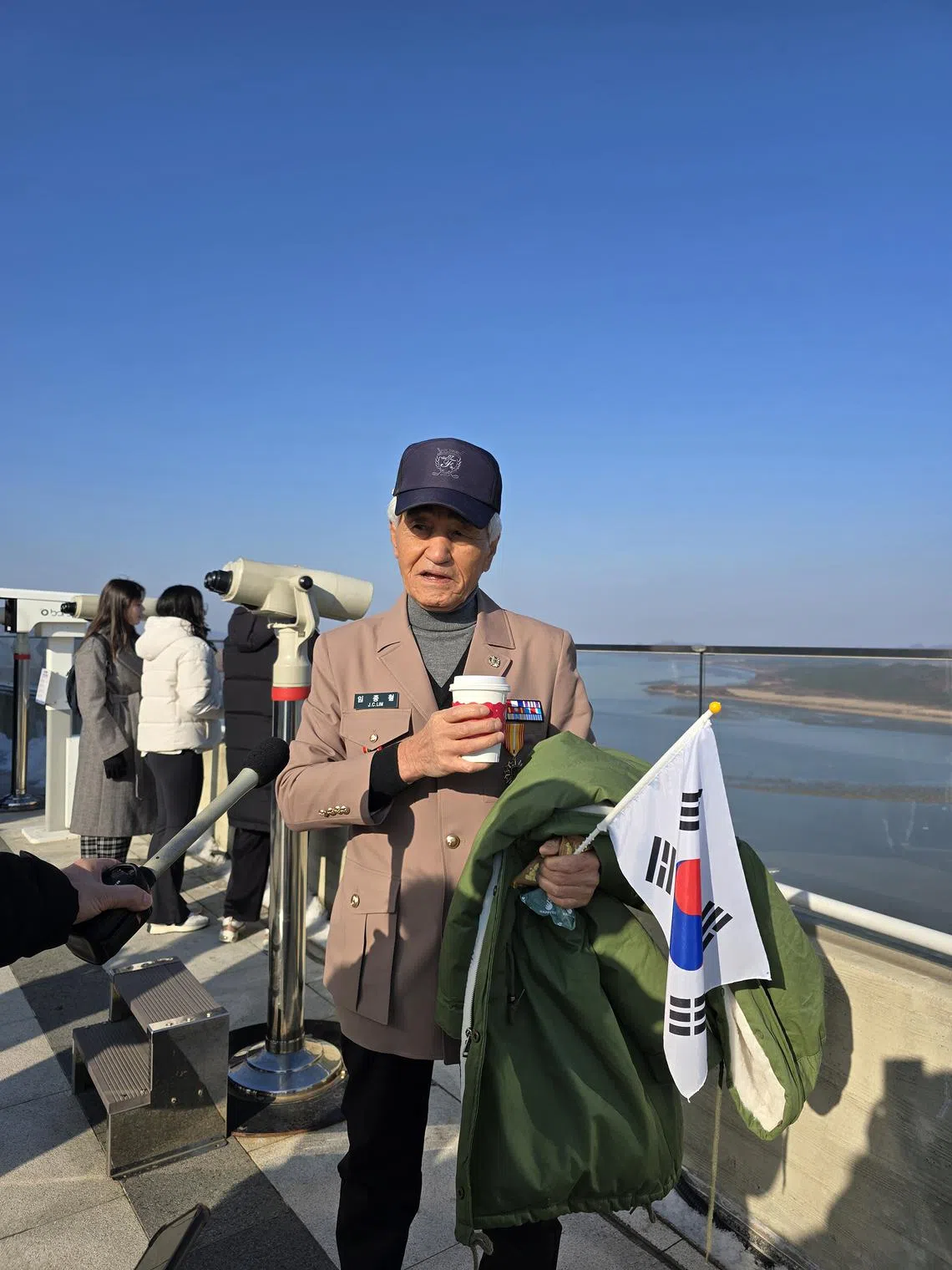
War veteran Lim Jung-cheol, 80, was too young to serve during the Korean War, but he served in the Vietnam war.
ST PHOTO: WENDY TEO
Another villager, taxi driver Seo Bong-hwan, 72, told ST: “The weather is cold now, so you hardly see the North Korean villagers coming out from their homes. But during the rice-planting season in spring, you see them working in the fields wearing clothes in the 1960s and 1970s style.
“Here in the South, we use tractors for farming and even then it is hard work. Over there, do you know that they still pull carts by hand or use oxen? At night, our side is brightly lit, while their side is pitch dark because of electricity shortages. The situation is simply heartbreaking.”
